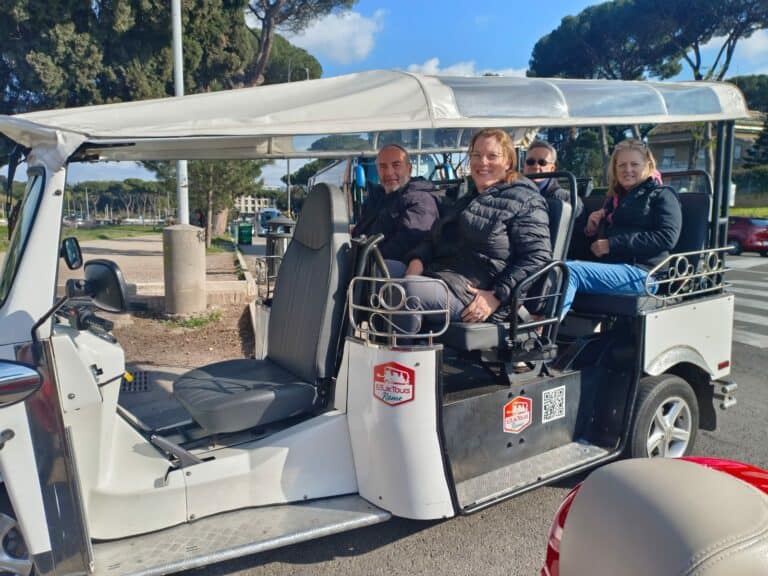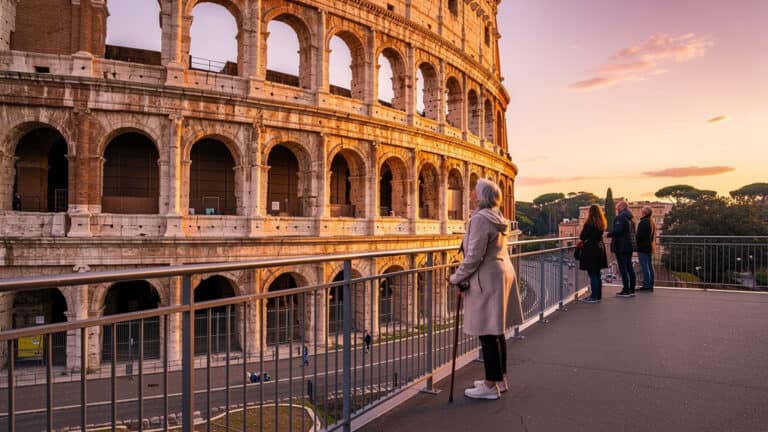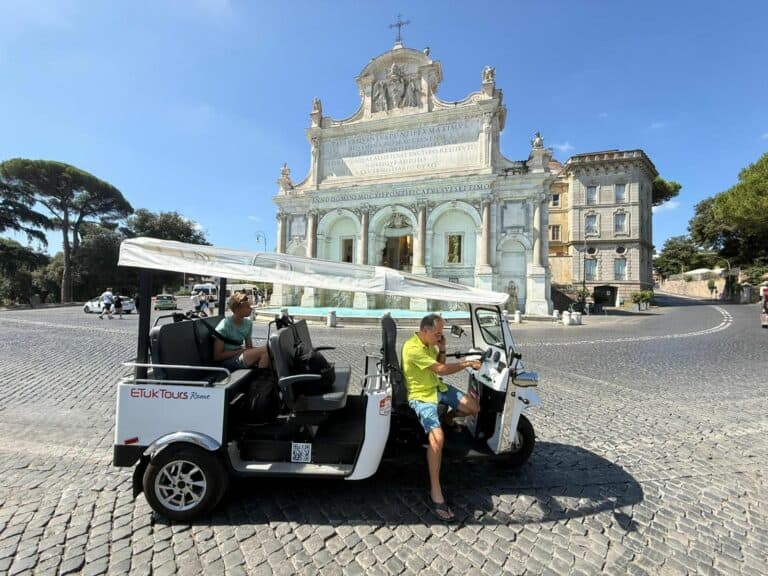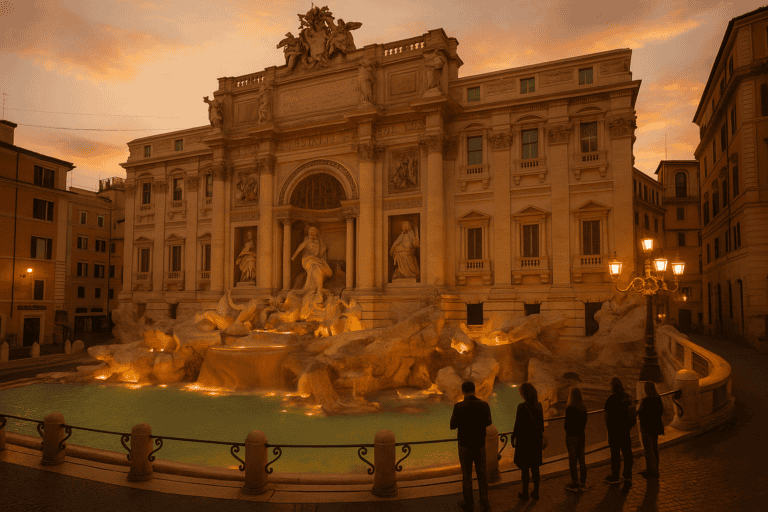The Appian Way (Via Appia Antica) isn’t just an ancient Roman road — it’s a living, breathing time capsule. Walking or riding along its worn cobblestones feels like stepping out of the modern world and straight into the pages of a history book. You don’t just visit the Appian Way. You experience it.
Where every step echoes with 2,000 years of history
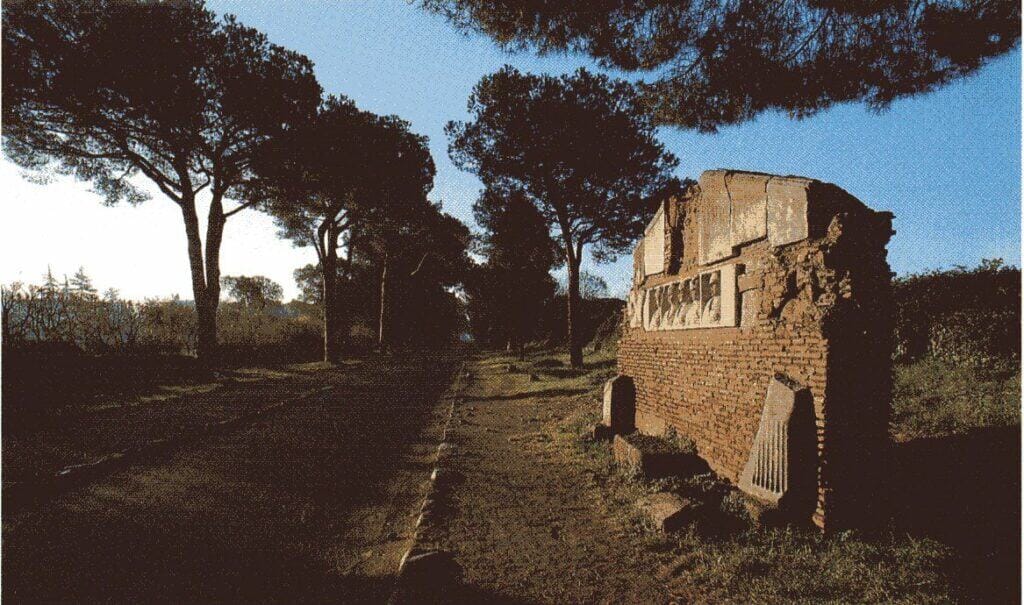
Built in 312 B.C., the Appian Way was once Rome’s “Queen of Roads,” stretching all the way down to the southern port of Brindisi. It carried soldiers, merchants, poets — and their stories, which still seem to echo from the ancient stones. As you explore this tranquil escape from the city’s lively center, you pass aqueducts, tombs, and open fields whispering long-forgotten legends.
The atmosphere here is unlike anything else in Rome. There’s no hum of traffic, just the rustle of cypress trees, distant birdsong, and the gentle crunch of gravel beneath your feet — or wheels.
A pathway through history
Originally built under the Roman Republic, the Appian Way served as a crucial military and trade route connecting Rome to the southeastern city of Brindisi. Spanning more than 350 miles, it’s a testament to Roman engineering — solid, enduring, and steeped in history. As you journey down this path, you’re quite literally following in the footsteps of Roman soldiers, merchants, and even emperors who once relied on it to expand and protect the empire.
Marvels along the way
What sets the Appian Way apart is the sheer number of ancient wonders that line it. Among the fields and trees, you’ll find monuments and ruins that tell Rome’s story. The Catacombs of San Callisto and San Sebastiano give glimpses into early Christian life, while the grand ruins of the Circus of Maxentius speak to the splendor of Roman entertainment. And don’t miss the Mausoleum of Cecilia Metella — a towering symbol of noble pride and Roman funerary tradition.
The road today
Time may have worn down its surface, but the Appian Way has preserved its rustic charm. To walk this road is to step into a living tapestry of history. The same basalt stones trodden by ancient feet are still here, reminding you of the lives that once moved along this route. As the road winds through shaded groves and sweeping fields, you might picture legionaries stopping to rest, or local shepherds — much like those still tending flocks here today.
In this quiet, pastoral setting, time softens. Past and present begin to blend. Whether you’re a history buff, a curious traveler, or a romantic soul, the Appian Way invites you to slow down and listen to the stories hidden in the stones.
Must-see highlights along the Appian Way
Your journey might begin at Porta San Sebastiano, the best-preserved gate in the ancient Aurelian Walls. Just past it lies the Church of Domine Quo Vadis, where legend says Christ appeared to St. Peter. Not far beyond, you’ll find the moving Catacombs of San Sebastiano and San Callisto, where early Christians once gathered in secret.
Further along, you’ll encounter the impressive Cecilia Metella Mausoleum and the ruins of once-opulent Roman villas. These structures rise silently among the meadows, standing as solemn testaments to a grand past. According to the Acts of the Apostles, even Saint Paul walked this road on his final journey to Rome.
And don’t be surprised if you spot a shepherd or two, just as their ancestors did thousands of years ago. Here — right in the heart of Rome — time truly seems to slow down.
A blend of ancient and modern
The Appian Way’s charm lies in this unique blend of old and new. As you tread these ancient stones, you may feel as if you’ve stepped into a living painting, where every sound — the ring of distant bells, the rustle of the breeze, the quiet conversations of fellow travelers — deepens the experience.
Despite being just a short distance from central Rome, this road offers a true escape. You can disconnect from the modern world and reconnect with the stories of the past. And if you pause at one of the rustic osterias that dot the way, you can enjoy traditional Roman food inspired by centuries-old recipes — a simple yet meaningful way to feel even more connected to those who came before you.
The challenge? it’s remote — and that’s the beauty
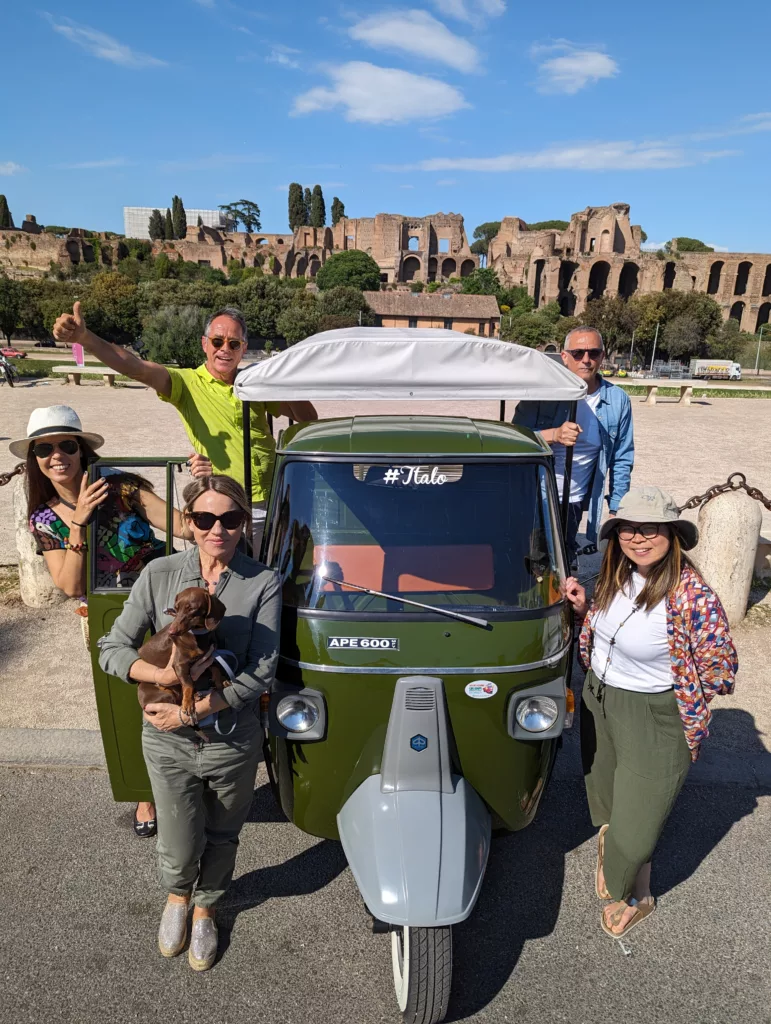
Getting to the Appian Way isn’t always easy. It’s rugged, quiet, and a bit far from public transportation routes. Walking the entire stretch isn’t for everyone — and that’s part of the magic. It’s not overrun by crowds. It feels untouched.
That’s why many visitors now opt for a more comfortable, immersive way to explore: small-group electric golf cart or ETuk tours. These modern, eco-friendly rides allow you to see more, without the strain of a long walk or the stress of planning it all yourself. You still hear the birds and feel the breeze — but with a local guide who brings the history to life at every turn.
A modern way to time travel
If you’re dreaming of a rich, story-driven tour of the Appian Way, a guided golf cart or tuk tuk tour might be just what you need. These vehicles are quiet and nimble, ideal for navigating the ancient road without disturbing its peace. You sit back, relax, and take in the ruins, legends, and scenic beauty — without the hassle.
This isn’t just transportation. It’s transformation.
“All roads lead to Rome,” they say — but only one lets you truly feel its soul. On the Appian Way, Rome speaks in whispers — and you’ll hear it best when you’re not rushing.
So when you’re ready to truly step into history, let Rome surprise you. Let it slow you down. Let it move you.
And if you’d prefer not to miss a single wonder, book a guided Appian Way tour with a local expert. Whether it’s by golf cart or ETuk, these modern chariots may just be your perfect time machine.
Experiencing the Appian Way: your gateway to the past
Consider enhancing your journey by booking a guided Appian Way tour. A quiet golf cart or breezy ETuk can whisk you comfortably through time, while your expert guide fills in the stories behind every ruin, every stone, and every stretch of the road.
Learn about the ancient engineering that kept the road functional for centuries — from its interlocking basalt paving to the clever drainage systems. Discover how this strategic route supported Rome’s military might and trade networks.
You’ll visit famous landmarks, but also uncover hidden gems — like the Circus of Maxentius, a massive and often-overlooked chariot-racing stadium that still stirs the imagination.
Immersing in nature and culture
As you ride or stroll through the Parco Regionale dell’Appia Antica, you’ll encounter more than just ruins. The lush parklands frame the ancient road beautifully, offering quiet green spaces full of local flora, fauna, and history.
This isn’t just a park — it’s a living museum. Locals gather here for walks, picnics, and cultural events. Modern sculptures sit beside Roman stones, and families bike past monuments that have stood for centuries. It’s a meeting point between generations.
From military artery to pathway of faith
The Appian Way was originally built to move troops quickly across the empire, reinforcing Roman dominance. But over time, it also became a spiritual path — especially in the early Christian era. The road’s catacombs and engraved tombs reflect a time of secret worship and persecution. The deeper you go, the more you feel the transformation of Rome from empire to spiritual center.
Rediscovery and revival
After the fall of Rome, the Appian Way faded into obscurity. It wasn’t until the Renaissance that its value was rediscovered. Today, the road lives again — as both a historical landmark and a peaceful retreat, inviting explorers to experience its layered past.
Planning your visit
-
wear comfortable shoes — the cobblestones are ancient and uneven
-
rent a bike or take a guided tour if you want to see more with less effort
-
visit in spring or fall for pleasant weather and fewer crowds
-
bring water and snacks — this may be a historic route, but you’ll still get thirsty
In conclusion
The Appian Way is more than a road — it’s a journey through centuries. A place where history, nature, and legend meet in every stone and shadow. Whether you explore it on foot or in a modern-day chariot, you’ll leave with more than photos — you’ll take home a deeper connection to the soul of ancient Rome.


